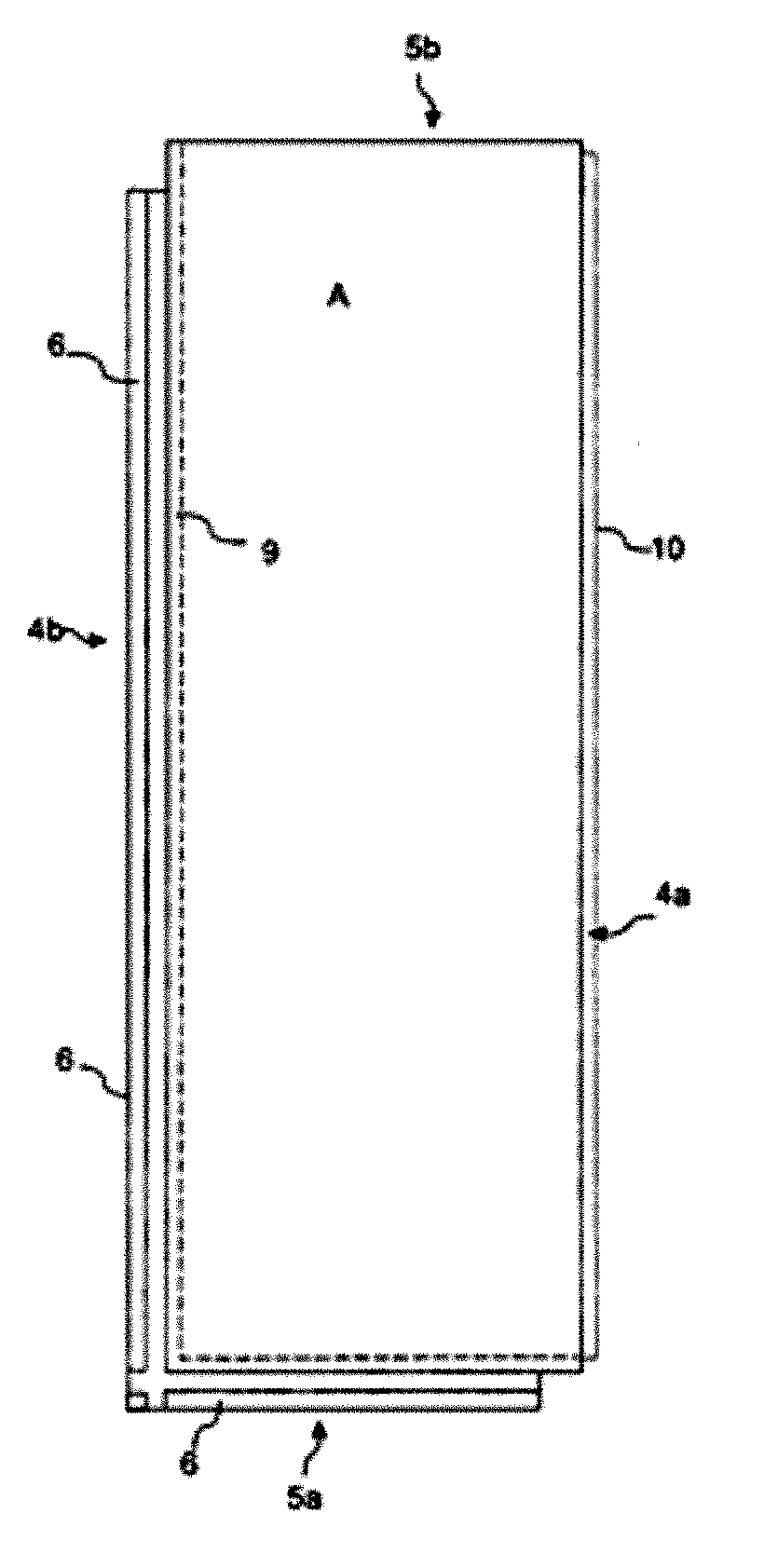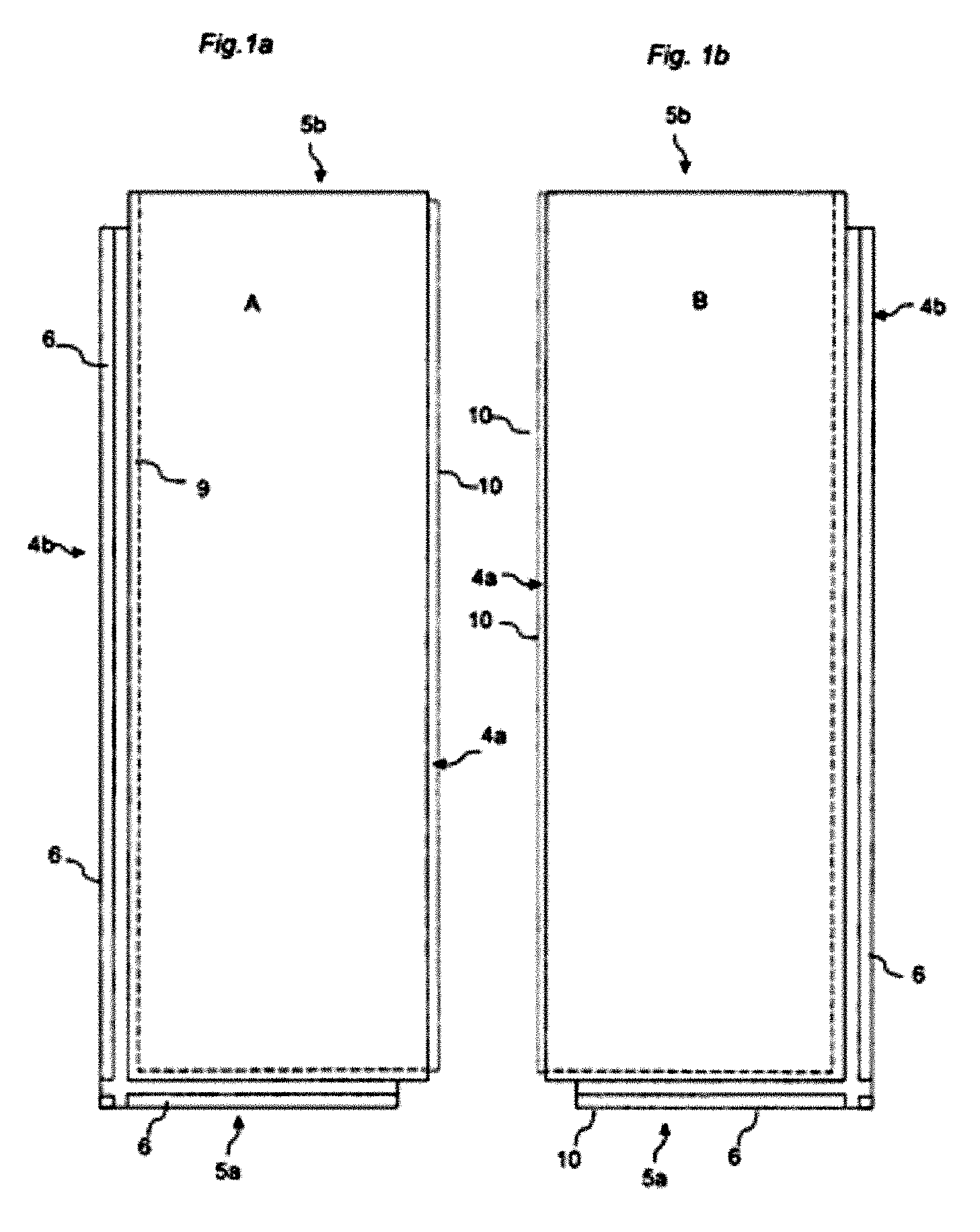Floor Covering And Locking Systems
a technology of locking system and floor covering, which is applied in the direction of load-supporting elements, structural elements, building components, etc., can solve the problems of large load on the locking system, continuous floor surface must as a rule be limited, and the load is particularly great in the passage between different rooms, so as to achieve better precision
- Summary
- Abstract
- Description
- Claims
- Application Information
AI Technical Summary
Benefits of technology
Problems solved by technology
Method used
Image
Examples
first embodiment
[0025] a floating floor comprises rectangular floorboards, which are joined by a mechanical locking system. The joined floorboards have a horizontal plane, which is parallel to the floor surface, and a vertical plane, which is perpendicular to the horizontal plane. The locking system has mechanically cooperating locks for vertical joining parallel to the vertical plane and for horizontal joining parallel to the horizontal plane of a first and a second joint edge. The vertical locks comprise a tongue, which cooperates with a groove, and the horizontal locks comprise a locking element with a locking surface cooperating with a locking groove. The format, installation pattern and locking system of the floorboards are designed in such a manner that a floor surface of 1 * 1 meter can change in shape in at least one direction at least 1 mm when the floorboards are pressed together or pulled apart. This change in shape can occur without visible joint gaps.
second embodiment
[0026] a locking system is provided for mechanical joining of floorboards, in which locking system the joined floorboards have a horizontal plane which is parallel to the floor surface and a vertical plane which is perpendicular to the horizontal plane. The locking system has mechanically cooperating locks for vertical joining parallel to the vertical plane and for horizontal joining parallel to the horizontal plane of a first and a second joint edge. The vertical locks comprise a tongue, which cooperates with a groove and the horizontal of a locking element with a locking surface, which cooperates with a locking groove. The first and the second joint edge have upper and lower joint edge portions located between the tongue and the floor surface. The upper joint edge portions are closer to the floor surface than the lower. When the floorboards are joined and pressed against each other, the two upper joint edge portions are spaced from each other and one of the upper joint edge porti...
PUM
 Login to View More
Login to View More Abstract
Description
Claims
Application Information
 Login to View More
Login to View More - R&D
- Intellectual Property
- Life Sciences
- Materials
- Tech Scout
- Unparalleled Data Quality
- Higher Quality Content
- 60% Fewer Hallucinations
Browse by: Latest US Patents, China's latest patents, Technical Efficacy Thesaurus, Application Domain, Technology Topic, Popular Technical Reports.
© 2025 PatSnap. All rights reserved.Legal|Privacy policy|Modern Slavery Act Transparency Statement|Sitemap|About US| Contact US: help@patsnap.com



